#M. A. Kuzniar
Explore tagged Tumblr posts
Text
Midnight in Everwood
⭐⭐; reading this book is like letting a kid explain their drawing to you - 'this is the cotton candy castle with a prince and princess and their 29 dogs and cats', they say, pointing to a wobbly blue squiggle and a patch of snot. all you can do is smile and nod and let it happen
Oh?? 👌😉😏
the narration, while over the top, fit the atmosphere the book wanted to create (confectionary sugar world). its probably annoying to listen to as the descriptions dont let up but im good at skimming so i could swim my way through the syrup just fine
i liked the beginning, before the author's hand became too glaringly obvious to ignore later in the plot - while marietta was never entertaining as a main character to follow, she felt more 'real' in her home environment, more believable as a character. i liked her relationship with her brother
I'll say this: finishing this book made me want to rewatch Barbie in the Nutcracker, just to feel something. what a classic! unlike this book 😭
No.. ❌🤢🤮
oversaturated with metaphors and flowery language - enough synonyms, hoity-toity French vocabularié and verbiage to rot your teeth out. it's also an 'oh?? 👌😉😏' point because i do think the author did it on purpose to create a certain tone, but it's A LOT.
i get the distinct sense that the author understands on a surface level that her character is a privileged whiny baby, but doesn't have the writing prowess to make her compelling OR put her through her paces of a satisfying character arc.
#girlboss #modernfeminism #womenarejustasstrongasmen played completely straight. a main female character who stays entirely, pretentiously convinced of their own girlbossery the whole time, despite doing NOTHING to earn it, and an author who reshapes the story to meet those expectations. anything for her #slay #girlboss #queen!!!!!
stuff constantly gets introduced just to not add anything to the story - the mouse king equivalent has in his castle a captured FAIRY and WARRIOR PRINCESS as part of his menagerie of women marietta finds herself a part of, and we just leave it at that. the guard captain is revealed as part of a SECRET REBELLION and all that happens is marietta gets weirdly horny about it.
the romance develops at the most annoying moments - they even decide to fuck in the snow (their bare asses!! in the SNOW!!! and not even a hint of pneumonia to show for it 🥶) before marietta returns to her world. i expected her to be hornt up, but the guy?? my brother in butterscotch we have got to get you better standards in women
Summary: Marietta Stelle wants to dance but she's too damn privileged to be allowed to pursue it as a viable career - she needs to get married to some creepy old man for the sake of her family's ambition, damnit! As her last performance draws near, Marietta is pushed into accepting the marriage proposal of the creepiest man in town, a mysterious toymaker named Dr. Drosselmeier. Of course, she's a #strongfemalecharacter, so she vehemently rejects him - only to fall victim to his (very heavy-handedly hidden) magic, which transports her in a magical world made of sugar, full of hidden dangers.
Concept: 💭💭💭 The Nutcracker isn't my favourite story ever, but I'm a sucker for a good fairytale - and for good music! I think it's a story that lends itself very heavily to a specific kind of whimsical, airy aesthetic - while allowing for darker themes or storytelling aspects to lurk in the shadows. A friend whose taste I trust recommended this book to me, and while I was skeptical that the summary (mostly because the blurb included a list of #tropes, which is a bookish red flag for me) would really deliver on its vague promises, I've done more for less.
Execution: 💥 This book should come with a 'NO DIVING! THIS POOL IS ONLY LESS THAN 1M DEEP' warning - it's so shallow I was encouraging my own reflection to keep going after every chapter. Bafflingly, this issue actually worsens when Marietta gets to the magical isekai world of Everwood - which is the OPPOSITE of what is supposed to happen! You would think a world governed by an evil mouse king (who is not a mouse, just a guy. he has enchanted mice running up and down his coat, ooh scary) and literally made of sweets would be fun, but we only get TOLD the names of its stories and legends and then the book is like 'next chapter! marietta felt more at home because her new friends told her stuff!' Plus, in the latter half of the book you really chafe against the author's lack of skill - like watching a puppet show while clearly being able to see the fingers / hands of the puppeteers, her characters are angry, awestruck, and miserable in the most wooden of ways as the author stomps on the next bullet point in her outline with all the subtlety of an elephant.
Personal Enjoyment: ❤❤ I can't say I enjoyed reading this book, because I really didn't - at one point I had to put the book down after SIX PAGES because marietta was getting on my nerves with her badly timed horniness (which she didn't know was horniness, because that builds ~~tension~~). But I had a LOT of fun recounting this book to my friend (the one who recommended it to me, who then gave up less than 20% in) and my sister. Everything that happened WAS frustrating, but in a way that made me laugh - which is the reason why I kept reading. It was like watching a collision in slow-mo - I had to know where it ended.
Favourite Moment: this entire book was painful but i had a good laugh when marietta and the captain fuck in the snow - and i do mean fuck. ass fully out behaviour. everwood is supposed to be stuck in a forever winter and they were all 'we'll just lay our coats down, it'll be fine'. like, i am absolutely sure it will NOT be fine, but you do you! it's not like marietta 'damn this feminism shit is easy' stelle is gonna listen to anyone anyway. that would be non-feminist! a ho never gets cold!
Favourite Character: Dellara, AKA the remains of a Sugar Plum Fairy equivalent stripped of every possible interesting thing and left on the floor to bleed out as a 'mean girl'. Don't get me wrong, Pirlipata was a fascinatingly underused character too, but Dellara actually snapped at Marietta multiple times (didn't amount to anything, but A+ for effort) and we simply have to stan her for that. Also she endures torture for the sake of others and is an otherworldly immortal being who becomes Queen at the end. I would gladly have thrown Marietta into the path of an oncoming bus to follow Dellara's storyline instead.
5 notes
·
View notes
Text
Midnight in Everwood

#books#booklr#book#book review#books and libraries#bookworm#book rec#bookstagram#reading#midnight in everwood#m. a. kuzniar#upon a frosted star#nutcracker#ballet#drosselmeyer#drosselmeier
0 notes
Text
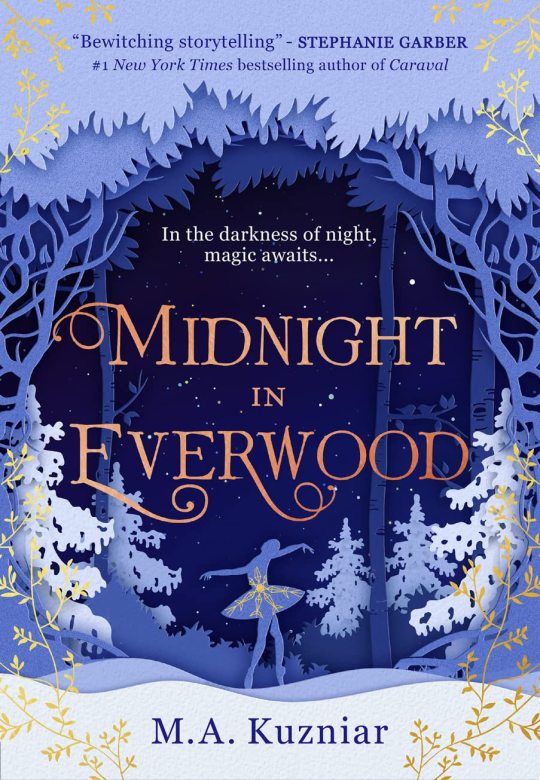
Title: Midnight in Everwood
Author: M.A. Kuzniar
Series or standalone: standalone
Publication year: 2021
Genres: fiction, fantasy, retelling, historical fiction, romance
Blurb: There's nothing Marietta Stelle loves more than ballet...but after Christmas, her dreams will be over, as she is obligated to take her place in Edwardian society. While she is chafing against such suffocating traditions, a mysterious man purchases the neighbouring townhouse. Dr. Drosselmeier is a charming but calculating figure who wins over the rest of the Stelle family with his enchanting toys and wondrous mechanisms. When Drosselmeier constructs an elaborate set for Marietta's final ballet performance, she discovers it carries a magic all of its own. On the stroke of midnight on Christmas Eve, she is transported to a snowy forest, where she encounters danger at every turn: ice giants, shadow goblins, and the shrieking mist all lurk amidst the firs and frozen waterfalls and ice cliffs. After being rescued by the butterscotch-eyed captain of the king's guard, she is escorted to the frozen sugar palace. At once, Marietta is enchanted by this glittering world of glamorous gowns, gingerbread houses, miniature reindeer, and the most delicious confectionary...but all is not as it seems, and Marietta is soon trapped in the sumptuous palace by the sadistic King Gelum, who claims her as his own. She is confined to a gilded prison with his other pets: Dellara, whose words are as sharp as her teeth, and Pirlipata, a princess from another land. Marietta must forge an alliance with the two women to carve a way free from this sugar-coated but treacherous world and back home to follow her dreams...yet, in a hedonistic world brimming with rebellion and a forbidden romance that risks everything, such a path will never be easy.
#midnight in everwood#ma kuzniar#m a kuzniar#standalone#2021#fiction#fantasy#retelling#historical fiction#romance
1 note
·
View note
Text
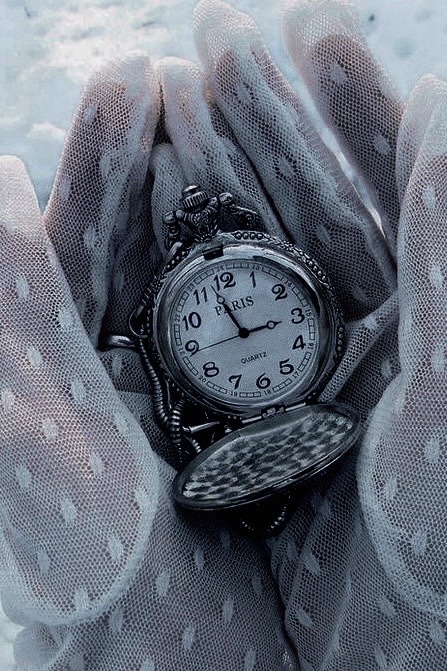

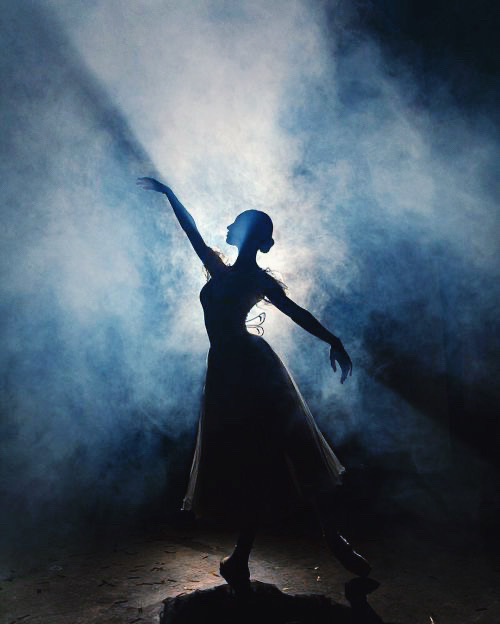

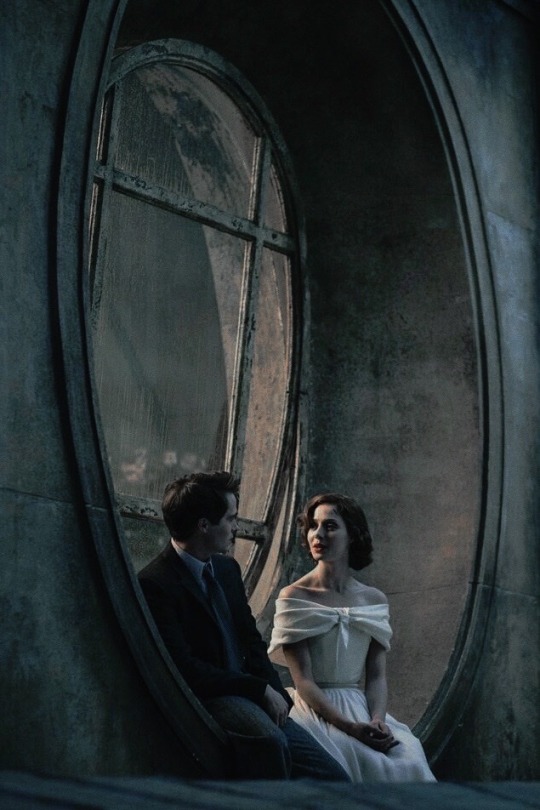

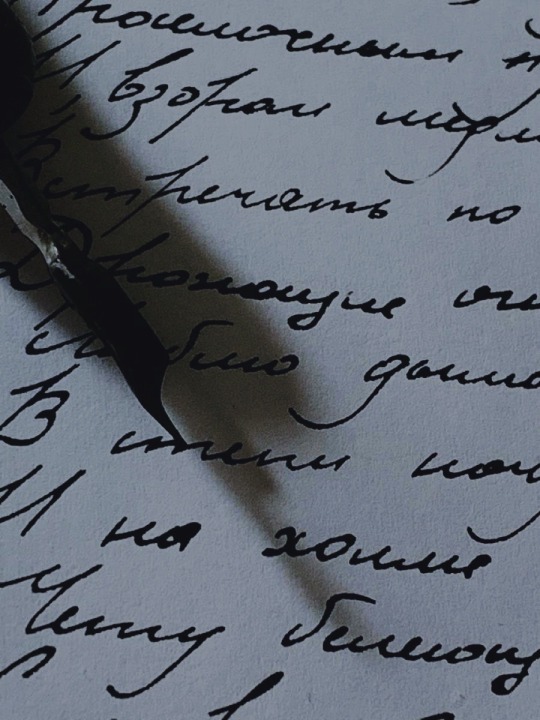
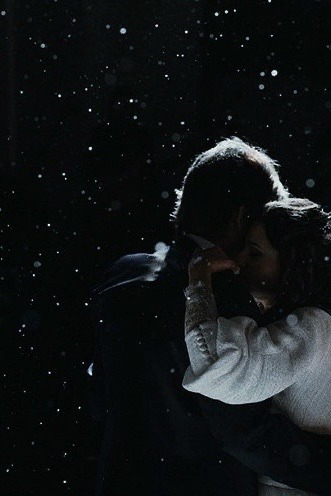

Chasing after your dreams is a peculiar kind of suffering; it is not for the weak-hearted or cowardly-minded. It requires deep strength and endless determination.
Midnight in Everwood, M. A. Kuzniar
#midnight in everwood#the nutcracker#my moodboards#books read in 2023#okay THERE we go#the first moodboard I made for this was garbage#I should’ve just waited until I felt inspired#this one is way better#I think I like this book better now that upon a frosted star was such a let down lol#in comparison it just made this one better
35 notes
·
View notes
Note
top 5 books with winter vibes
oooh this is a fun prompt <3
1. little women by louisa may alcott
2. the night circus by erin morgenstern
3. rebecca by daphne du maurier
4. midnight in everwood by m. a. kuzniar
5. beartown by fredrik backman
ask me my top 5 anything!
#i still need to read rebecca and midnight in everwood but i still hold that they have winter vibes!#heard some mutuals say that the night circus is september?? ummm no sorry it’s the deep dark winter for me!#kiss kiss#answered asks#mutuals tag#abby tag
6 notes
·
View notes
Text

Hoping this Nutcracker retelling will help me feel more festive. I feel like this month is flying by. 🎄
181 notes
·
View notes
Text
Midnight in Everwood by M A Kuzniar
Midnight in Everwood by M A Kuzniar: a #review of a retelling of Dumas's Nutcracker #Novel #YoungAdult
A review by Nalini Haynes Midnight in Everwood is a fantasy novel set in a non-magical world where Marietta lives with her parents who plan to force her into marriage very soon. She’s a ballerina, rehearsing in her home studio when she first sees Dr Drosselmeier on the street. This is no Romeo and Juliet situation: when the Doctor looks into her window, straight at Marietta, she shrinks into the…

View On WordPress
0 notes
Text
Review: Midnight in Everwood by M. A. Kuzniar
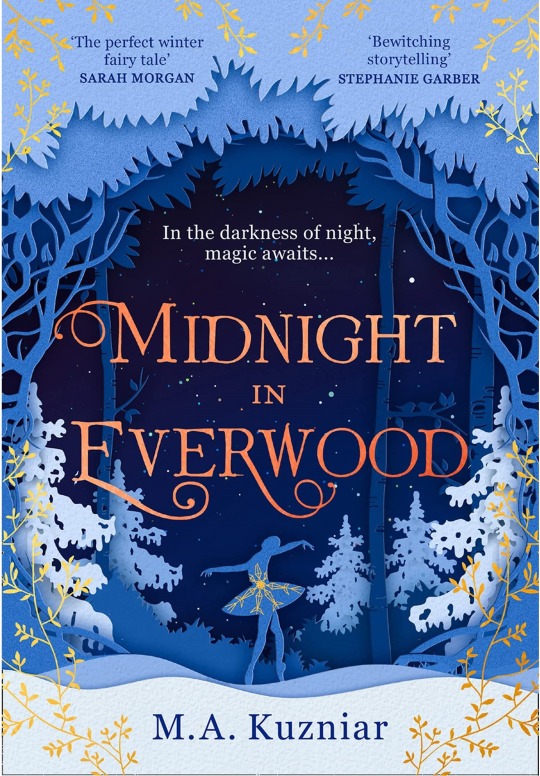
It was definitely the cover of this gorgeous wintery treat that caught my eye and when I read that it was a retelling of The Nutcracker, I was even more intrigued. I vaguely know the story of The Nutcracker, so I was curious to see how many parallells I’d be able to pick up on.
Nottingham, 1906. Marietta Stelle’s life revolves around ballet but now her family are keen for her to give it all up and find a suitable husband. When enigmatic Dr Drosselmeier moves into the neighbourhood, Marietta’s parents are eager to make the match between them. When he builds a beautiful, intricate set for Marietta’s final ballet performance, Marietta discovers that Drosselmeier’s work contains a special kind of magic. A magic that transports her into a whole different world, full of sweets, snow and a tyrannical king. The air in Everwood is brimming with rebellion and romance but how will Marietta navigate the tricks and traps of this strange realm?
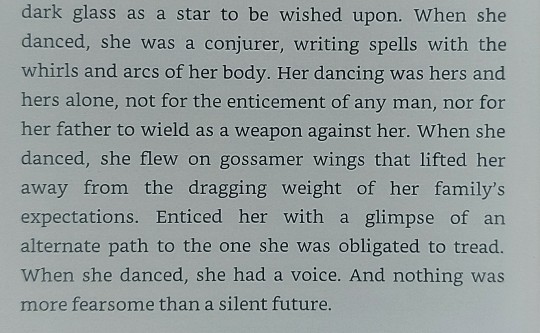
Marietta’s life is full of restrictions and expectations, so it’s no wonder that she finds immense freedom in dance. It’s the only way that she knows how to be happy, confident and fulfilled and my heart broke at the thought of her having to give it up for marriage. As a headstrong, determined woman, I knew she would find a way to keep dancing and I couldn’t wait to cheer her on while she did that.
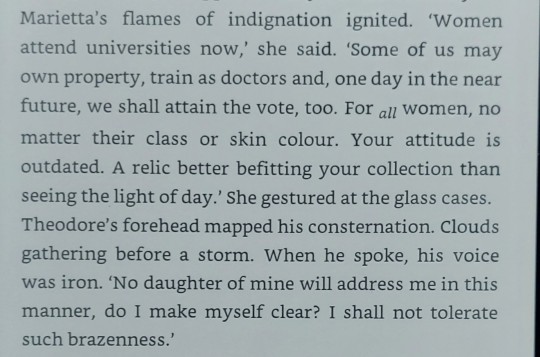
For an Edwardian woman, Marietta’s mindset is ahead of her time. Perhaps it’s because she is holding on tight to a dream that she knows she is expected to let go. She makes no bones about confronting her traditional parents and insisting that she will follow her own path in life. I was really inspired by her and I know that anyone who is set on following their dreams no matter what other people think will be too.
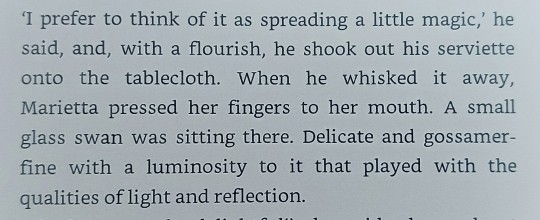
Drosselmeier has a certain charisma and I was very taken in by him at the start. Then he switches and takes on a more sinister vibe that chilled me to the bone. I knew immediately that he wasn’t of earthly origin and that is definitely what gives him his charm. I suppose that Drosselmeier acts as a warning that glittery, mysterious whimsy isn’t always a light that you should walk into.
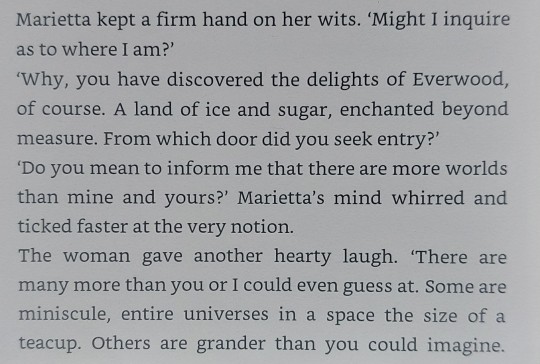
Everwood is a place within a world called Celesta. I would love to spend a bit of time in Everwood but not a long time. I imagine it would get intoxicating and possibly a bit headachy after a while! The idea of multiple worlds existing alongside each other is a notion that I’ve always loved and I like the idea that there is potential for Kuzniar to write further books set in adjacent worlds to Celesta. Perhaps they can all be inspired by classic stories like this one?

I loved the female friendship aspect of the novel and I liked how this resonated long after the final page. Marietta learns how powerful close female bonds can be and it’s ultimately her connections with Pirlipata and Dellara that enables her to escape the dangers she finds herself in. All three women are fierce, brave and smart and that’s quite rare for a book set in the early 1900s.
The romance is slow-burning, gentle and believable. It is doomed from the start but for some reason, that didn’t stop me from rooting for it. Towards the end, it gets deeper and I wasn’t expecting that. At the time, I felt it was a bit out of character but perhaps that’s part of Marietta’s development.

Midnight in Everwood is a spellbinding retelling of a story that I’ve not seen revisited before. It’s romantic, magical and decadent with wonderful writing, endless charm and a whimsical aura of folklore. The bright lights, delicious sugary sweets and stunning balls have put me firmly in the Christmas mood, so fans of The Night Circus and Caraval should be adding it to their festive wishlist!
0 notes
Text
Thank you, @poetry-my-lord for tagging me 🍀
3 ships: Mordana, Armor, Mergana
First Ever Ship: Ged and Tenar from Le Guin's Earthsea series. A priestess of a dark cult and a wandering cursed wizard; it was imprinting.
Last song: Mansfield and Cyclops by Espers
Last movie: Panna a Netvor rewatch (Czech BatB)
Currently reading: Midnight in Everwood by M. Kuzniar, a Nutcracker retelling
Currently watching: nothing. I'm not a serials watcher, honestly. Merlin BBC and a couple of others are rare exception.
Currently consuming: herbal tea 🍵
Currently craving: ski trip and write a new fic :}
10 notes
·
View notes
Quote
There is a celebrated storyteller in Everwood. His tales always incorporate a variation of the moral that if you do not cherish your dreams, you have forgotten how to live. Dreaming is an intrinsic part of human nature, on par with love and hate and hope.
M. A. Kuzniar, Midnight in Everwood
7 notes
·
View notes
Text
Midnight in Everwood review
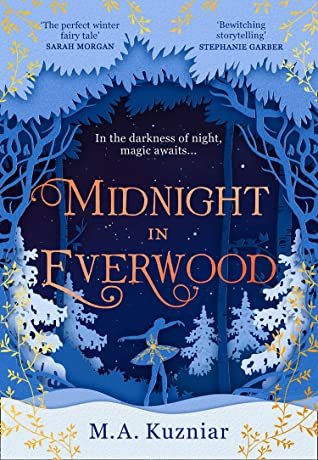
5/5 stars Recommended for people who like: magic, fantasy, multiple worlds, the Nutcracker, dark courts Big thanks to NetGalley, Harper Collins, and M. A. Kuzniar for an ARC of this book in exchange for an honest review! I was super excited to see that there was a book that was a reimagining of the Nutcracker. I've danced for most of my life and wish that there were more books that used ballets as bases for their stories. Admittedly, I was also somewhat wary considering the last YA book I read based on a ballet wasn't one I was a fan of...however, this one seemed like a good match and it was. Kuzniar did a good job weaving the scenery and making it feel rich, regardless of whether it was Edwardian England or the 'land of sweets.' I liked the details she gave to each place, so I didn't mind that almost the entire first third of the book was spent in England. I got a good sense of the imagery that was present in Nottingham as well as the kinds of people Marietta was surrounded with and the life she was expected to lead. The so-called 'land of sweets,' or Everwood, was also, naturally, rich in imagery. I liked that Kuzniar really utilized each sense in order to create a full picture of the world. The different scents that floated about on the air were an intriguing aspect of the story that I liked, as was the idea of a town and palace made completely of confectionary items. Not everything is as it seems, of course, and the pretty land has a rotting core. We get to see right from the get-go that things aren't right when Marietta is advised by a shop owner in the Everwood town she arrives in that she has to swiftly leave lest she attracts the attention of the king. Naturally, things don't quite go as planned for Marietta and we do, in fact, get to see this darker side of the otherwise sweet world. Things do get dark, but I think Kuzniar manages to strike a good balance between the whimsy of the world and the darkness of its ruler. The desperation of Marietta and her fellow prisoners, Pirlipata and Dellara, are obvious and we are given plenty of evidence to back up their worries and desire for escape. Marietta was a fun character to read. She's already determined and ambitious at the start of the book, desiring to dance ballet more than anything but unsure if she'll be able to do so after Christmas, but the rest of her story just makes her even more headstrong than she already was. The Marietta in Nottingham seems to have a decent head on her shoulders, making at least some contingencies, but the Marietta in Everwood almost immediately lands herself in foolish trouble (foolish because she was warned about it) and can blame no one but her own pride, so I thought that was a bit odd despite her falling into a trap regarding dancing. To be fair to her, Marietta learns from her mistakes and is able to recognize where her fallacy lay and correct it in the future. I liked seeing her character growth in the book and how she came into herself. Pirlipata is one of the other women imprisoned with Marietta. She is a princess of another land of the realm Everwood is in and was kidnapped by the king after she rejected his marriage proposal. Pirlipata is sweet and compassionate from the get-go, not faulting Marietta for her mistakes and often acting as a gentler force to Dellara's intensity. That isn't to say that she's all sweetness, she was a warrior-princess in her country, and Pirlipata shows her grit and strength more than once in defense of the Marietta and Dellara. I think she served as a good balance between the other two personalities, but I do wish she had a stronger voice in the book, since I feel like the spotlight was mainly on Marietta (for obvious reasons) and Dellara, when Pirlipata was probably in the book just as much as Dellara. Dellara is thorns and lightning to Pirlipata's compassionate words. She acts as a good foil, I think, to Marietta. They're both in similar situations, but Dellara doesn't hesitate to point out where Marietta is lacking, though her barbs mask a caring heart. I think Dellara is a stand-in for the traditional Sugarplum Fairy, and I wholeheartedly approve. I like the take where the fairy is a bloodthirsty, angry creature who wants to directly take down the 'mouse king.' Dellara was certainly a major presence in the story and I liked the camaraderie she had with Pirlipata and Marietta. I also think Kuzniar did a good job showing that Dellara and Pirlipata had a different relationship than Dellara and Marietta, though all three of them grew close. It felt realistic that the shape of it was slightly different. Legat is the captain of the king's guard (i.e., the 'Nutcracker') and it's hard to tell whose side he's on at first. He didn't seem overly friendly, but he also shows compassion for the three women and helps them multiple times in the book. Additionally, he doesn't seem to be too overbearing on his soldiers, despite probably having reason to be. He's the love interest for Marietta and while I wasn't sure of him at first, I did come around after some of his secrets are revealed. He's a much better (and more interesting) person than I'd initially thought and I think the two make a good match. King Gelum takes the role of the 'mouse king' from the original. He's cruel and capricious, and what's more, he doesn't seem to wholly understand, or care, about human limits. We don't see a lot him face-to-face, but he's the person that nearly everyone fears and is the reason there's a current of fear and rebellion in Everwood. In this same vein, Dr. Drosselmeier is quite the antagonist in this book. I did figure some things out about him well before Marietta did, but considering how obvious some of the hints were, I think this was intentional. Drosselmeier is a toymaker with the talent of making elaborate and magical inventions. He charms everyone with them, but he definitely begins giving off slimy vibes as the book goes on, until a chance encounter brings Marietta away from Nottingham, and him. Marietta's parents kind of suck and they really just exist to add tension and erect barriers in Marietta's life. It seems that only her marriage will please them, despite the fact that Marietta is a gifted dancer and getting a spot with the nearby ballet company could be prestigious for her. It isn't too surprising when you take into account that the father seems to disdain art, either Marietta's dancing or her brother's painting. The tension that runs through the family provides some good, believable material, and I liked the final showdown that occurs with them all. Marietta's brother, Frederick, actually seems to be a decent one. His passion is for painting, though only Marietta and his secret beau, Geoffrey, seem to be aware of that and instead he is pursuing law. In Nottingham, he stands as Marietta's strongest supporter most of the time and I liked reading about their relationship. It was nice to see a sibling pair that took one another into their confidences and remained close rather than one that was fighting. The ending to this book aligns well with the ending to the ballet version, though it is still slightly different. I was, admittedly, hoping for an ending a biiiit more like Barbie's The Nutcracker, but I'll take what I can get. It's definitely hard to see how else the story could've ended with the way things were wrapped up, and I think the events and decisions at the end are true to the characters. Overall, I enjoyed this book quite a bit and loved reading about both Nottingham and Everwood. The pleasures and dangers of that otherworld definitely came through and I liked that there was a decent mix of plot and character scenes.
#book#booknerd#bookish#books#books and literature#booksbooksbooks#bookaddict#bookaholic#booklover#bookblr#bookstagram#books of 2021#books of instagram#books of tumblr#book review#book recommendations#midnight in everwood#ma kuzniar#the nutcracker#nutcracker ballet#ballet#ya fantasy#ya fiction#ya books
6 notes
·
View notes
Photo

“Housing estate on Krucza Street” architecture by M. Kuzniar and Cz. Wegner [875 x 663]
1 note
·
View note
Text
End of Year Book Tag
#14th century#Agincourt#Arthurian Legend#Book Tag#Book Tags#Books#C. J. Sansom#Costanza Casati#Dan Jones#Delemhach#Emily M. Danforth#England#English History#Fantasy#Greek Mythology#Henry Plantagenet#Historical Fiction#Historical Thriller#History#J. M. Miro#M. A. Kuzniar#Magic#Mai Corland#Meg Shaffer#Mythology#Mythology Retellings#Nonfiction#Plantagenet#Plantagenet Era#Sophie Keetch
0 notes
Photo

“Housing estate on Krucza Street” architecture by M. Kuzniar and Cz. Wegner [875 x 663]
0 notes
Text
To what extent did Japan experience a Romantic period? A comparison between European and Japanese Romantic paintings
An introduction to Romanticism Romanticism has a complex ontology, meaning that there are a lot of definitions of Romanticism. It was an artistic, intellectual and philosophical movement that originated in Europe towards the end of the 18th century. Although Romanticism is an unsystematic set of ideas, there are threads of unity. First, Romanticism is a reaction against the Enlightenment values of reason and order in the aftermath of the french revolution of 1789 (Galitz, K. 2004). It is against the rational, mechanical, and utilitarian outlook on the world and it opposes dogmatic religion. Second, nature is more powerful than the society dominated by rationalism, industrialization and division of labor. The Romantic notion encouraged men to think for themselves and it emphasized the individual. Romanticism tried to break the perception of the world. Other characteristics are: it emphasizes imagination and emotions over reason and the intellect. Also, the belief that there is goodness in humanity, and the strong belief of justice for everyone (Grewe, C. 2009).
But how were these notions expressed in the art of painting? Moreover, did these Romantic notions only happen in Europe or did Japan experience a Romantic period as well?
Romanticism in European paintings As said before, Romanticism is a reaction against the Enlightenment and its values. In the visual arts this is seen as a reaction against the strict rules of Academic art. The principles of romantic paintings are: violent and terrifying images of nature, typified by an emphasis on spontaneous plein-air painting. Plein-air painting is a style of outdoor painting characterized by the representation of natural light and atmosphere, in contrast to the artificial light associated with paintings produced in the studio (Plein-air painting, n.d). Furthermore, blurring of stylistic boundaries and the popularity of landscape paintings is intensified (Galitz, K. 2004). In these paintings the effect of time is often illustrated in the form of ruins. This is exemplified by the painting Evening: Landscape with an Aqueduct by Théodore Gericault in which the ruins represent the great power of nature, thus alerting its viewer to its vicarious role. In this work the blurring of stylistic boundaries is also moderately expressed. However, this blurring of boundaries is even better illustrated in the painting Wanderer above the Sea of Fog by Caspar David Friedrich. This tension between the evocation of absence and the re-presentation of nature exemplifies the ambiguity of German Romantic landscape aesthetics (Kuzniar, A. 1988, p. 359).
youtube
Evening: Landscape with an Aqueduct - Théodore Gericault (1818)
Wanderer above the Sea of Fog
- Caspar David Friedrich (1818)
Romanticism in Japanese paintings According to Weisenfeld (2002), the European influences of Romanticism reached Japan in the 1880’s, but it was only during the late Meiji period in the beginning of the twentieth century when Romanticism actually started influencing Japanese artists. During this period, the Meiji government aimed to modernize the Japanese society by promoting Western influences. As a result, the modern Japanese art style called Yoga, which is fully based on Western art styles and techniques, was introduced at Japanese art schools. This new movement was an initiative from the Meiji state to introduce Western aesthetics within traditional Japanese painting. In addition, an important factor for the development of Romanticism in the Japanese society was the involvement of Japanese poets in spreading European Romantic ideals. These poets intensively started using the concept of Romanticism to rise against the increasing alienation of the individual within the Japanese society. As a result the Japanese society experienced a shift towards an emphasis on the experience of the individual (Weisenfeld, 2002). The Japanese art historian Okakura Kakuzo described romanticism in the same way as his European companions, arguing that ‘’The Spirit must vanquish Matter’’(Lucken, 2016, p. 62). One of the most influential founders of Romanticism in Japan was Korada, who had studied in Paris and brought the philosophical ideals of Western painting to Japan. One of these ideals was the technique of painting en plein-air, as seen in Harvest by Asai Chu. Another example of a Japanese romantic painter is Shigeru Aoki who highly expressed Romantic emotionalism in his paintings. He incorporated Japanese myths and legends in his paintings by depicting historical Japanese figures in a heroic way, reflecting his own passionate feelings for the Japanese nation. Aoki did not focus on realistic interpretation, but instead he emphasized personal artistic expression. Therefore he used pastel shades and unclear forms to evoke emotion in his works, as seen in his Self-Portrait. (Weisenfeld, 2002).
Harvest - Asai Chu (1890)
Self-Portrait - Shigeru Aoki (1903)
Paradise under the Sea
- Shigeru Aoki (1907)
Conclusion In conclusion, there was a significant influence of European Romanticism in Japan. This was mainly caused by the Meiji government that encouraged Western movements, Japanese painters who took their experiences from Europe to Japan and the Japanese poets who spread those ideals through their work. The philosophical ideals of Romanticism in Japan reflects the same as the European romantic ideals of valuing individualistic expression over reason and embracing the power of nature. Therefore, one can state that around 1880 a set of Western aesthetics found a way to be established within Japan, leaving small traces of Romanticism in modern Japanese art.
Janneke van Baar - 415136 Ana-Kaia van den Berghe - 409342
References
Galitz, K. (2004). “Romanticism.” In Heilbrunn Timeline of Art History. New York: The Metropolitan Museum of Art, 2000-. Retrieved from: http://www.metmuseum.org/toah/hd/roma/hd_roma.htm%20(October%202004)
Grewe, C. (2009). Painting the Sacred in the Age of Romanticism. Ashgate Publishing, Ltd.
Kuzniar, A. (1988). The Vanishing Canvas: Notes on German Romantic Landscape Aesthetics.
Lucken, M. (2016). Imitation and Creativity in Japanese Arts: From Kishida Ryusei to Miyazaki Hayao. German Studies Review, 11(3), 359-376. Columbia University Press.
Plein-air painting [Def. 1]. (n.d.). Dictionary. Retrieved March 12, 2017, from: http://www.dictionary.com/browse/plein-air.
Weisenfeld, G. (2002). Mavo: Japanese artists and the avant-garde, 1905-1931 (Vol. 11). Univ of California Press.
0 notes
Text
Midnight in Everwood
A review of my Christmassy read from 2022
Over the last year, I’ve been reading a lot of retellings. I’ve enjoyed the different ways the authors take already known stories in different directions. I find it fascinating how the stories form and spin off from the original into something different that still retains some of the vibes and feelings of the original. Midnight in Everwood is a Nutcracker retelling which made me a little unsure…

View On WordPress
#Book Review#Books#Christmas#Edwardian England#English History#Fairytale Retelling#Fantasy#Historical Fiction#M. A. Kuzniar#Magic#Magical Realism#Retelling#The Nutcracker#YA Fantasy#Young Adult
0 notes